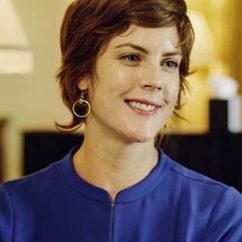Articles and News
10 Easy Tips For Getting Good PR From Consumer Editors | April 06, 2016 (0 comments)

New York, NY—There’s an old saying in the marketing world: “advertising you pay for, editorial you pray for.”
These days, getting editorial coverage is a paradox: simultaneously easier and harder than ever. Internet and blogosphere offer infinitely more opportunities to get someone to mention your store or your product, but more companies than ever also are pitching the same people, and consumers have far more choices in what media they consume.
Rachel Garrahan of The Jewellery Editor, spoke at the recent WJA In The Know conference. A well-respected consumer fashion journalist and frequent contributor to The New York Times, she gets a steady stream of pitches from brands, designers, and retailers alike who want exposure for their business. In a Q&A session with Amanda Gizzi, director of public relations for Jewelers of America, Garrahan offered a series of tips for ensuring you get noticed—the right way—and where not to bother spending your money to get noticed. Here are her tips:
1. Email is best way to pitch. But be aware of the fine line between following up and annoying! Following up is good—and often necessary—but don't be so pushy that you have the reverse effect.
2. If your pitch doesn't work for one story, it might work for something in the future. For example, she related a May 2015 story she wrote for the New York Times about the increase in jewelry consignment arrangements, versus retailers purchasing a line outright, and the impact that has on designers’ ability to grow.
3. Make time to talk to editors whenever you can. Stories—such as her consignment article—often come out of a conversation with a retailer or designer or someone in industry.
4. Save your money and don’t invest in a lavish press kit. Press kits still have their place but they probably don't get read or used in the way they're intended. (See editor’s note at the bottom of the page for tips on what to include and leave out of your press kit.)
5. Images are very important, especially in our industry, said Garrahan. This is crucial. They don't have to be professional photographs, but they do have to really show the jewelry to show what makes your product unique and make it stand out to the press.
6. When it comes to social media, make it a point to follow any editors you want to pitch. Garrahan herself uses Instagram the most, but follow the editors on all channels.
7. For retailers as well as designers, this is a time of great change in the industry. The upside for retail is that it pushes jewelers to be more creative and innovative. I think it's the same thing that goes for the designers themselves. For getting coverage, like for designers, it’s about being relevant to what's going on and trying new things and see how things are working.
Editor’s note: Here are three more tips for creating an effective press kit.
8. Per Garrahan’s point about images, make absolutely certain that you include digital images, either on a flash drive (preferred), CD (less common today), or by providing a URL to access images for download. A press kit that has nothing but photocopies of past articles you’ve been mentioned in is useless to editors. Those past articles are worth including for background and to give you “street cred,” but the editor you’re pitching now needs to have digital images he or she can use.
9. In packaging your press kit, you want to present a nice image, but err on the side of “less is more,” especially if you're going to a tradeshow. All the fancy glossy folders, shopping bags, and most of the paper you include will go straight into the hotel trash can, while most editors typically only bring home your images, basic information, and business cards. This was true even before airlines started imposing luggage weight restrictions, so imagine how much more true it is today.
10. It is entirely ok—indeed, preferable—to have your entire press kit in digital form on a flash drive and skip the paper altogether. Include all your text documents (press release, background information, photo descriptions) as well as your photos on the drive. It is preferable to include your text in Word documents, rather than PDF format.
There also are countless options for presenting a clever, attractive, customized flash drive; this is a better investment of marketing dollars than a paper kit and has the added benefit of standing out with your name on it, vs. an anonymous unlabeled generic flash drive.







